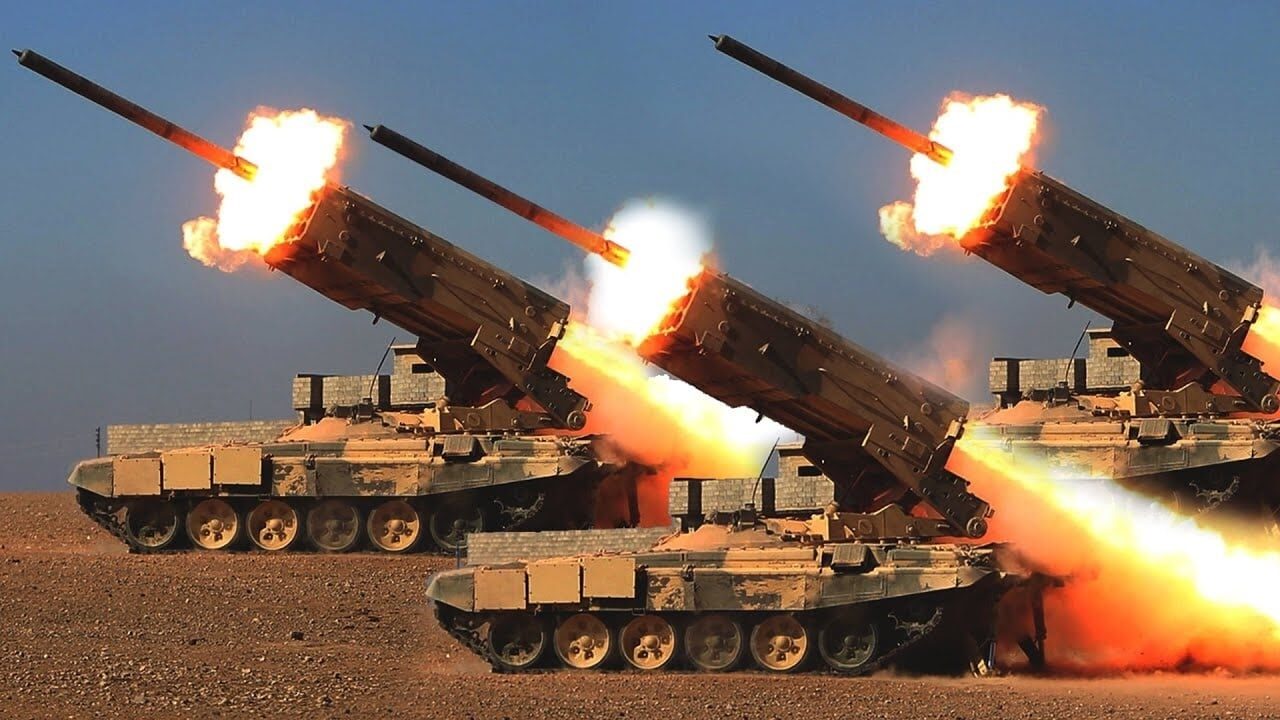Dramatic Scenes As Russian Thermobaric Missile Launcher Destroyed – Dramatic video footage shared on social media this week shows how Ukrainian forces were able to take out a Russian thermobaric multiple rocket launcher from above.
The video footage, apparently recorded by a rotary-blade unmanned aerial vehicle, shows a huge fire in the trees between two agricultural fields somewhere near Vuhledar in Donetsk Oblast, Ukraine.
The video displays the initial explosion in slow motion, showing huge sparks dissipating into the air. Then, after a second explosion at the same site, another explosion can be seen in the distance. The additional explosion also occurred in a hedgerow between two agricultural fields, suggesting that another Russian missile launcher or military vehicle was taken out shortly after the first one.
According to Ukraine Weapons Tracker, the missile launcher taken out in this particular video was a TOS-1A multiple rocket launcher.
Many Russian military experts consider this Moscow’s most lethal and dangerous weapon of war.
“The Ukrainian 72nd Brigade claimed to destroy a Russian TOS-1A thermobaric multiple rocket launcher in the vicinity of Vuhledar, #Donetsk Oblast,” Ukraine Weapons Tracker writes.
The footage comes as Ukrainian and Russian troops engage in a bitter battle for the coal-mining town of Vuhledar.
Russian Offensive Imminent In Vuhledar
Analysts believe that the conflict in Vuhledar, which has intensified in recent weeks, is indicative that a renewed Russian offensive is already underway or due to occur imminently.
Speaking to The Moscow Times, Rob Lee, a war analyst at the Foreign Policy Research Institute, said that the renewed offensive is expected to begin in the Kreminna-Svatove region.
“We are waiting for an expected offensive in the Kreminna-Svatove area that will likely be spearheaded by the 76th Air Assault Division,” Lee said.
Lee added that the Russians might have more success there than they have in Vuhledar, where Ukrainian forces have so far proven to be capable of defending their positions.
While Lee predicted some successes, however, he also warned Russia that they might not be able to make the gains they need to take full control over the Donetsk region.
“They may have more success, but it is unlikely they will be able to achieve a true breakthrough and seize much territory,” he said.
Even with newly-recruited soldiers on the way from Russia, however, the Kremlin continues to struggle with a major shortage of advanced weapons and ammunition that could impede their ability to make the kind of gains they need to succeed in Donetsk and Luhansk.
The Institute for the Study of War noted this week that the problem is so severe that Russian President Vladimir Putin “likely seeks scapegoats for the Russian defense industrial base’s struggle to address equipment and technological shortages.”
You can watch the full video here.
Jack Buckby is 19FortyFive’s Breaking News Editor. He is a British author, counter-extremism researcher, and journalist based in New York. Reporting on the U.K., Europe, and the U.S., he works to analyze and understand left-wing and right-wing radicalization, and reports on Western governments’ approaches to the pressing issues of today. His books and research papers explore these themes and propose pragmatic solutions to our increasingly polarized society.

